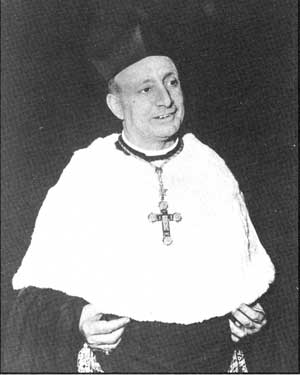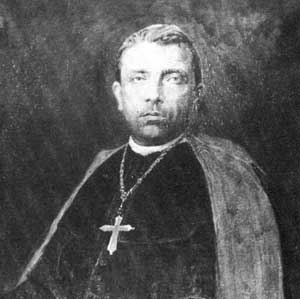Archivi della categoria: La diocesi
statistiche – tabella 2
parrocchie | 98 (8 vicariati ) (9 comuni) |
sacerdoti | 98 secolari e 27 regolari 1.803 battezzati per sacerdote |
27 religiosi 233 religiose 16 diaconi | |
212.546 abitanti in 1,355 km² 211.000 battezzati (99,3% del totale) | |
Eretta: | 15 maggio 1844 |
rito: | romano |
cattedrale: | S. Nicolò |
Santi patroni: | San Corrado Confalonieri (patrono principale) Maria Scala del Paradiso (patrona secondaria) |
statistiche tab1
anno | popolazione | sacerdoti | diaconi | religiosi | parrocchie | |||||||||
battezzati | totale | % | numero | secolari | regolari | per battezzato | uomini | donne | ||||||
1950 | 190.400 | 190.800 | 99,8 | 179 | 115 | 64 | 1.063 | 70 | 160 | 53 | ||||
1969 | 201.165 | 201.675 | 99,7 | 162 | 131 | 31 | 1.241 | 49 | 68 | 79 | ||||
1980 | 195.465 | 200.116 | 97,7 | 121 | 91 | 30 | 1.615 | 37 | 330 | 88 | ||||
1990 | 207.500 | 208.950 | 99,3 | 118 | 82 | 36 | 1.758 | 51 | 286 | 98 | ||||
1999 | 207.000 | 209.000 | 99,0 | 115 | 84 | 31 | 1.800 | 7 | 40 | 255 | 98 | |||
2000 | 207.000 | 210.825 | 98,2 | 119 | 88 | 31 | 1.739 | 10 | 40 | 255 | 98 | |||
2001 | 207.000 | 210.825 | 98,2 | 120 | 90 | 30 | 1.725 | 10 | 39 | 255 | 98 | |||
2002 | 209.500 | 210.825 | 99,4 | 119 | 90 | 29 | 1.760 | 14 | 38 | 255 | 98 | |||
2003 | 211.000 | 212.119 | 99,5 | 117 | 90 | 27 | 1.803 | 14 | 43 | 233 | 98 | |||
2004 | 211.000 | 212.546 | 99,3 | 117 | 90 | 27 | 1.803 | 16 | 47 | 233 | 98 | |||
Mons. Giorgio Scarso

Nato a Modica il 13 agosto 1916, avvertì molto presto la chiamata a seguire Cristo nel carisma di S. Francesco ed entrò nell’ordine dei frati cappuccini della provincia di Siracusa. Qui nel 1934 ricevette l’abito e il 28 giugno 1942 fu ordinato sacerdote.
Erano gli anni in cui imperversava la II guerra mondiale e il giovane P. Giorgio sentì forte la vocazione missionaria, così appena terminato il conflitto partì con la nave per il lontano Brasile. Destinato dapprima nello Stato “Spiritu Santo” a S. Teresa, poi a Mantenna, Niteroi, Petropolis profuse tutte le sue energie giovanili nell’evangelizzazione e nella promozione umana di quella gente finché l’8 dicembre 1967 fu eletto Vescovo di Patos de Minas.
È qui che ha esercitato il suo ministero episcopale fino al 1992, anno in cui, per raggiunti limiti di età, ha lasciato a mani più giovani la Diocesi per tornare in convento a Niteroi e continuare a fare il missionario con l’entusiasmo del neofita. Rientrato in Diocesi, ha svolto il ministero come Cappellano all’Ospedale Maggiore di Modica dal 26-5-1999 all’8-2-2007. Risiede nel convento dei Frati Minori Cappuccini di Modica.
Mons. Guglielmo Giaquinta

Nato a Noto il 28 giugno 1914, si trasferì con la famiglia a Roma. Ordinato sacerdote il 18 marzo 1939, venne inviato come viceparroco alla parrocchia Madonna dei Monti, dove rimase fino al 1948. Frequentò il Pontificio Istituto Giuridico dove si laureò in utroque iure. Verso la fine degli anni ’40, diede vita alle Oblate Apostoliche, laiche consacrate all’apostolato della santità, e ai Gruppi Pro Sanctitate. Tenne numerosissimi corsi di esercizi spirituali dettati a laici, a sacerdoti e alle oblate apostoliche, dedicandosi anche alla scrittura di numerosi articoli nel Segnalatore Ascetico e in altre riviste di spiritualità.
Nel Vicariato di Roma, fu Difensore del vincolo e Giudice, Sostituto del Vicariato e responsabile dell’Ufficio disciplina e infine Segretario dello stesso Vicariato. Venne ordinato Vescovo il 1° novembre 1968, svolgendo il suo servizio a Tivoli, prima come Amministratore Apostolico e poi come Vescovo residenziale della diocesi tiburtina. Per una grave malattia il 25 giugno 1987 chiese al Papa di essere sollevato dall’incarico e il 1° novembre dello stesso anno ricevette il saluto commosso della diocesi. Morì il 15 giugno 1994.
Card. Francesco Carpino

Nato il 18 maggio 1905 a Palazzolo Acreide, nel 1926 conseguì la Laurea in Filosofia e in Teologia e la Licenza in Diritto Canonico. Sempre nel 1926 ritornò in diocesi dove gli venne affidato l’insegnamento nel Seminario diocesano di Noto; il Diaconato gli fu conferito il 29 giugno 1927 e il Presbiterato il 14 agosto dello stesso anno.
Il Vescovo gli affidò l’insegnamento delle discipline filosofiche e teologiche in Seminario. Nel 1929 gli fu affidata la Cattedra di Teologia Sacramentaria presso il Pontificio Ateneo Lateranense, fino al 1951. Pio XII l’11 febbraio 1951 lo nominò Arcivescovo titolare di Nicomedia e coadiutore con diritto di successione di Mons. Ernesto Eugenio Filippi, Arcivescovo di Monreale. Ricevette la consacrazione episcopale nella Patriarcale Basilica di S. Giovanni in Laterano l’8 aprile 1951 dal Cardinale Adeodato Giovanni Piazza. Il 23 agosto 1951 morì Mons. Filippi e immediatamente Mons. Carpino divenne Arcivescovo Metropolita. Governò l’Arcidiocesi per dieci anni, fino al gennaio 1961.
Il 19 gennaio 1961, l’Arcivescovo Carpino, venne nominato Assessore alla Congregazione Concistoriale (oggi Congregazione per i Vescovi) e trasferito alla sede titolare arcivescovile di Sardica ed eletto Segretario del Sacro Collegio dei Cardinali. Il 13 febbraio 1961 ritorna a Roma a espletare il nuovo mandato. Fu nominato Segretario del Conclave del giugno 1963, nel quale venne eletto Papa Paolo VI. In Curia Mons. Carpino svolse numerosissime mansioni. Per l’improvvisa morte del Card. Ernesto Ruffini avvenuta l’11 giugno 1967, il 26 seguente Paolo VI, chiamò a succedergli proprio Mons. Francesco Carpino, creato Cardinale nel Concistoro dello stesso giorno. Faceva solenne ingresso nella sede palermitana il 14 settembre 1967. Il 17 ottobre 1970, Paolo VI accettava le sue dimissioni. Lasciata la diocesi palermitana il Card. Carpino si ritirava a Roma, dove morì martedì 5 ottobre 1993.
Mons. Paolo Pappalardo

Nato a Buccheri il 18 febbraio 1903, conseguì la laurea in Teologia. Al termine dei suoi studi Mons. Vizzini lo richiamò a Noto per affidargli l’insegnamento di lettere al Ginnasio Superiore e la guida per una camerata di Seminaristi. Consacrato Sacerdote il 15 agosto 1925, rimase insegnante di latino e greco in Seminario.
Si trasferì a Catania per assistere il Vescovo che nel 1927, in seguito ad un incidente, si era fratturato l’omero e alcune vertebre. Terminato questo delicato momento, comincia il servizio di don Pappalardo presso la Santa Sede. Nel 1933 risulta Protocollista della Sezione Liturgica della Congregazione per le Chiese Orientali; nel 1934, ne diventa Archivista e nel 1935 Minutante.
Il 15 settembre 1938 viene nominato Cameriere segreto soprannumerario. Nel 1946, pur rimanendo Minutante, risulta Regente ad interim della Delegazione Apostolica in Iran, il 7 agosto 1948, viene nominato egli stesso Delegato Apostolico, sempre in Iran (allora Persia) e promosso a Vescovo titolare di Apamea di Siria ed inviato come Nunzio Apostolico in Iran, con sede a Teheran: la sua consacrazione episcopale avvenne il 29 settembre 1948. Nel 1949, pur rimanendo Delegato Apostolico, fu nominato Amministratore Apostolico di Ispahan dei Latini. Il 19 marzo 1953 fu nominato Internunzio Apostolico in Siria (dove rimane fino al 1962) e il 14 luglio Amministratore Apostolico del vicariato di Aleppo. Nell’anno dell’elezione del Papa Giovanni XXIII, l’Arcivescovo Pappalardo fu costretto da una paresi a rientrare a Roma e a ricoverarsi presso l’Ospedale di Frascati; qui assistito dai Religiosi di Don Orione, morì il 6 agosto 1966.
Mons. Corrado Mingo

Nato a Rosolini l’8 settembre 1901, conseguì alla Pontificia Università del Laterano la Laurea in Filosofia e in Teologia. Il 15 agosto 1925 venne ordinato Sacerdote. Nel 1929 la Congregazione dei Seminari lo chiamò ad insegnare Teologia Morale e Diritto Canonico nel Seminario Regionale di Assisi, fino al 1937; qui fu anche Assistente Diocesano della Gioventù Femminile di Azione Cattolica. Nel 1938 Mons. Angelo Calabretta, nuovo Vescovo di Noto, lo nominò Arciprete Parroco nella Chiesa Madre di Rosolini e Assistente Diocesano della Gioventù Femminile di Azione Cattolica, affidandogli anche la Cattedra di Teologia Morale e di Diritto Canonico nel Seminario.
Il 17 dicembre 1950 fu eletto Vescovo di Trapani da Pio XII e il 18 marzo raggiunse la nuova sede vescovile. Il 28 aprile 1961 Papa Giovanni XXIII lo promosse Arcivescovo Metropolita dell’Arcidiocesi di Monreale. Dalla C.E.I. fu nominato Membro della Commissione Episcopale per l’Alta Direzione dell’A.C.I. Negli anni sessanta la Sacra Congregazione per i Religiosi gli affidò la Visita Apostolica in tutti i Conventi dei Padri Cappuccini della Sicilia, dopo “i tristi fatti di Mazzarino”. Paolo VI affidò a Lui “ad experimentum” il cammino iniziale della Famiglia Religiosa nascente dei “Frati Minori Rinnovati”, fondata da Frate Umile. Mons. Corrado Mingo morì a Mazara del Vallo il 16 maggio 1980 nel corso dei lavori della sessione primaverile della Conferenza Episcopale Siciliana.
Mons. Antonino Morana

Nacque a Modica il 17 maggio 1824. Consacrato Vescovo a Palermo il 27 febbraio 1872. Vescovo di Caltagirone, governò la Diocesi con le sue rare doti di mente e di cuore.
Morì a Noto il 18 agosto 1979.
Mons. Giovanni Battista Bongiorno
Nominato Vescovo di Caltagirone il 22 settembre 1879, prese possesso della Diocesi il 19-12-1879. Rinunziò alla Diocesi ed accettò il 26 giugno 1885 la nomina a Vescovo titolare di Flaviopoli. Morì a Palazzolo Acreide nei primi del 1900.
